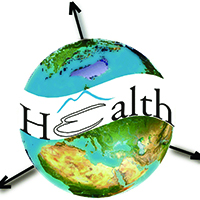Ecological niche modeling of Babesia sp infection in wildlife experimentally evaluated in questing Ixodes ricinus.

Submitted: 2 December 2019
Accepted: 4 February 2020
Published: 17 June 2020
Accepted: 4 February 2020
Abstract Views: 1329
PDF: 720
HTML: 64
HTML: 64
Publisher's note
All claims expressed in this article are solely those of the authors and do not necessarily represent those of their affiliated organizations, or those of the publisher, the editors and the reviewers. Any product that may be evaluated in this article or claim that may be made by its manufacturer is not guaranteed or endorsed by the publisher.
All claims expressed in this article are solely those of the authors and do not necessarily represent those of their affiliated organizations, or those of the publisher, the editors and the reviewers. Any product that may be evaluated in this article or claim that may be made by its manufacturer is not guaranteed or endorsed by the publisher.
Similar Articles
- Wang Fei, Lv Jiamin, Wang Chunting, Li Yuling, Xi Yuetuing, A two-stage location model covering COVID-19 sampling, transport and DNA diagnosis: design of a national scheme for infection control , Geospatial Health: Vol. 19 No. 2 (2024)
- Ming Wang, Stephen A. Matthews, Khaled Iskandarani, Yimei Li, Zheng Li, Vernon M. Chinchilli, Lijun Zhang, Spatial-temporal analysis of prostate cancer incidence from the Pennsylvania Cancer Registry, 2000-2011 , Geospatial Health: Vol. 12 No. 2 (2017)
- Amanda G. Carvalho, Carolina Lorraine H. Dias, David J. Blok, Eliane Ignotti, João Gabriel G. Luz, Intra-urban differences underlying leprosy spatial distribution in central Brazil: geospatial techniques as potential tools for surveillance , Geospatial Health: Vol. 18 No. 2 (2023)
- Zhi-Min Hong, Hu-Hu Wang, Yan-Juan Wang, Wen-Rui Wang, Spatiotemporal analysis of hand, foot and mouth disease data using time-lag geographically-weighted regression , Geospatial Health: Vol. 15 No. 2 (2020)
- Heitor Victor Veiga da Costa, Cristine Vieira do Bonfim, Wilson Fusco, Morvan de Melo Moreira, Fernando Maciano de Paula Neto, Impact of the COVID-19 pandemic on the number of births in Pernambuco Brazil , Geospatial Health: Vol. 17 No. s1 (2022): Special issue on COVID-19
- Micaela Natalia Campero, Carlos Matías Scavuzzo, Carlos Marcelo Scavuzzo, María Dolores Román, Spatial pattern analysis of the impact of community food environments on foetal macrosomia, preterm births and low birth weight , Geospatial Health: Vol. 19 No. 1 (2024)
- Derek C. Johnson, Pema Lhaki, Charlotte Buehler Cherry, Mirjam-Colette Kempf, Eric Chamot, Sten H. Vermund, Sadeep Shrestha, Spatial analysis of the regional variation of reproductive tract infections and spousal migration correlates in Nepal , Geospatial Health: Vol. 12 No. 1 (2017)
- Robert Bergquist, Anna-Sofie Stensgaard, Laura Rinaldi, Vector-borne diseases in a warmer world: Will they stay or will they go? , Geospatial Health: Vol. 13 No. 1 (2018)
- Teqi Dai, Kaifei Guo, Juanjuan Zhao, Wenqing Lu, Impact of the presence of private hospitals on the spatial equality of healthcare accessibility in Beijing, China , Geospatial Health: Vol. 17 No. 2 (2022)
- Iain J. East, Samuel Hamilton, Graeme Garner, Identifying areas of Australia at risk of H5N1 avian influenza infection from exposure to migratory birds: a spatial analysis , Geospatial Health: Vol. 2 No. 2 (2008)
<< < 15 16 17 18 19 20 21 22 23 24 > >>
You may also start an advanced similarity search for this article.

 https://doi.org/10.4081/gh.2020.843
https://doi.org/10.4081/gh.2020.843




